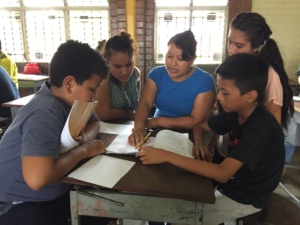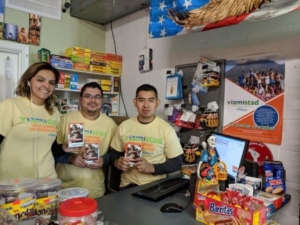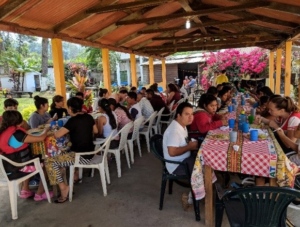How Important is Chinese Lending to Latin America?
Chinese lending to Latin America and the Caribbean hit an all-time high of $37 billion in 2010.
Family remittances have great potential to reduce poverty and foster development.[1] For Guatemalans, remittances are an important source of income. With more than one million Guatemalans living abroad, remittances entering Guatemala make up 10% of Guatemalan Gross Domestic Product.[2] These remittances are usually perceived as part of the recipient’s general income and thus, they are mainly used for daily living expenses at the household level.
In addition to these important benefits for individual families, remittances can also contribute to development at the community and even at the national level. The Opportunities for My Community Project promotes saving formalization and credit access for remittance recipients as a way to integrate migrant economic contributions into the formal economy.
Moreover, adding to these efforts, the project does important work in engaging the Guatemalan diaspora with their home county’s development through resource mobilization directed toward education programs in Guatemala. In this regard, since 2016, the project has supported diaspora engagement through partnerships with 1) Guatemalan Hometown Associations (HTAs) and 2) remittance companies.

The project has successfully partnered with two HTAs based in Virginia, “Asociación de Migrantes Catarinecos” and “Unidos por el Palmar”, and one HTA based in Los Angeles, “Red Migrante” in order to offer a free extracurricular program (B’etil Diploma[3]) for youth at three schools in Santa Catarina Mita, Jutiapa; El Palmar, Quetzaltenango; and Nueva Concepción, Escuintla. Thanks to the B’etil Diploma, over 500 students at the Middle School level reinforced their math and communication skills, learned the basics of entrepreneurship, and developed soft skills needed to join the professional world.
HTAs contacted teachers to teach the B’etil Diploma, while the project trained them, monitored the classes, and provided the educational material needed and shared the methodology and the B’etil Diploma curriculum. Moreover, the members of the HTAs were able to engage with students’ performance through direct communication with the teacher throughout the academic year. In fact, at the end of the program, HTAs decided to organize a graduation ceremony to recognize students for completing the B’etil Diploma.
The project has also partnered with remittance companies to engage the Guatemalan diaspora in addressing the development obstacles that their country faces. Partnering with remittance companies has allowed the project to reach out to a wider audience of Guatemalans in the US who are not necessarily members of an HTA.

For instance, thanks to the partnership with the companies Dolex and Viamericas, the project has delivered informational brochures regarding the Guatemala’s educational challenges; around 20,000 brochures were handed out to Guatemalan remittance senders raising awareness about the importance of education in Guatemala. Further, a partnership with the remittance company Intermex connected the company with one of our partner HTAs in order to join efforts to implement the B’etil Diploma in La Nueva Concepción, Escuintla.
Another way of engaging the Guatemalan diaspora was through a campaign to mobilize resources towards an educational camp for people with disabilities in Guatemala. The camp is organized by an NGO called Viamistad. In partnership with the remittance company Viamericas, the project launched a platform at eleven remittance sending points located in Maryland through which the diaspora was able to make donations at no additional cost. By using social media campaigns and newspaper advertisements, the Guatemalan diaspora living in Maryland was informed about the campaign and invited to participate through their donations.

Social media has turned out to be an effective tool to reach out to the diaspora and connect them to social causes in their country as it adds up individual contributions to a greater cause, allowing remittances to have a far-reaching social impact. In ten days, a Facebook social campaign targeted to Guatemalans living in Maryland was able to reach out over 5,000 users, of which more than half interacted with the ad.
Understanding not only the remittance recipient but the sender as a key actor in directing remittances towards development is a central part of the Opportunities for My Community Project. Doing so through existing HTAs and technological platforms can turn altruistic intentions into tangible and far-reaching actions that translate into educational opportunities for Guatemalans.
Chinese lending to Latin America and the Caribbean hit an all-time high of $37 billion in 2010.
Venezuelan president Nicolas Maduro left China last month with a supposed show of support from the Chinese government.
Summary of PREAL’s recent international conference on teacher effectiveness, held in Guatemala City.
